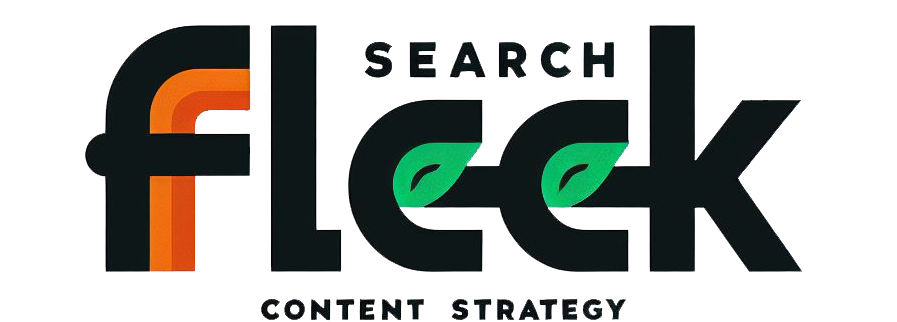In today’s world, open conversations about mental health are more important than ever. Mental health blogs can play a crucial role in fostering understanding, reducing stigma, and providing valuable support to those struggling. Whether you’re a mental health professional, someone with personal experience, or simply passionate about mental well-being, starting a blog can be a rewarding way to share your voice and make a positive impact.
This comprehensive guide will walk you through every step of creating a successful mental health blog, from finding your niche and building your foundation to crafting compelling content and fostering a supportive community.
Finding Your Voice and Niche
The first step in starting a mental health blog is to identify your unique voice and niche.
The Power of Mental Health Blogging: Mental health blogs can be powerful tools for:
Raising awareness: By openly discussing mental health topics, you can help break down stigma and encourage people to seek help.
Building a community: Your blog can create a safe space for people to connect, share experiences, and offer support to one another.
Providing information and resources: You can offer valuable information about mental health conditions, coping mechanisms, and available resources.
Defining Your Passion and Expertise: Consider:
Personal experiences: Have you navigated a mental health challenge yourself? Sharing your story can be incredibly powerful and relatable for your audience.
Professional background: Are you a therapist, counselor, or another mental health professional? Your expertise can provide valuable insights and information.
Areas of specific interest: Do you have a particular interest in anxiety, depression, self-care, or another mental health topic? Focusing on a niche allows you to cater content to a specific audience.
Identifying Your Ideal Audience: Understanding your target audience is key to creating content that resonates with them. Consider:
Demographics: Age, gender, location, socioeconomic background.
Needs and challenges: What are the specific challenges your audience faces related to mental health?
Interests and preferences: What kind of content would they find most helpful and engaging?
Building Your Blog’s Foundation

Once you have a clear vision for your blog, it’s time to lay the groundwork.
- Choosing the Right Platform: Several popular blogging platforms offer different features and ease of use. Here are some options to consider: * WordPress: Offers a high degree of customization and flexibility, but requires some technical knowledge. * Blogger: A free and user-friendly platform from Google, but with limited customization options. * Medium: A great platform for writers who want to focus on content creation without worrying about technical aspects. Factors to consider when choosing a platform: * Ease of use: How comfortable are you with website building and management? * Customization: Do you want a highly customized design or a more basic setup? * Scalability: Can the platform handle your blog’s growth over time?
- Securing Your Domain Name and Hosting:
- Domain name: This is your blog’s web address, so choose something memorable, relevant to your niche, and ideally brand-specific (e.g., [invalid URL removed]).
- Web hosting: This is the service that stores your blog’s files and makes it accessible online. Choose a reliable hosting provider with good customer support.
- Designing a User-Friendly Blog:
- Navigation: Make it easy for users to find the information they need with a clear and intuitive navigation menu.
- Visuals: Use high-quality images, videos, and infographics to break up text and make your content more visually appealing.
- Mobile responsiveness: Ensure your blog displays and functions well on all devices, including smartphones and tablets.
Crafting Compelling and Credible Content
The heart of your blog lies in the content you create. Here’s how to ensure it’s informative, engaging, and trustworthy.
Developing a Content Strategy:
Plan blog post topics: Brainstorm ideas that align with your niche and audience interests.
Maintain consistency: Establish a regular publishing schedule to keep your audience engaged.
Trending mental health issues: Stay up-to-date on current events and address relevant mental health topics.
Researching and Writing Authoritative Posts:
Credible sources: Base your information on reputable sources like scientific studies, mental health organizations, and professional journals.
Accessibility and engagement: Present complex topics in a clear, concise, and engaging way.
Actionable tips: Offer practical advice and coping mechanisms that readers can apply in their own
Integrating Personal Stories (Optional):
Sharing your personal experiences with mental health can be a powerful way to connect with your audience. However, it’s crucial to do so responsibly:
Respectful and responsible: Share your story in a way that is respectful of yourself and others.
Vulnerability and connection: Highlight the power of vulnerability and how shared experiences can foster connection.
Promoting Your Blog and Building an Audience

Getting your blog seen is essential for reaching your target audience and building a community. Here are some effective strategies:
Leveraging Social Media Platforms:
Sharing on relevant channels: Share your blog posts on social media platforms like Facebook, Instagram, and Twitter.
Engaging with followers: Respond to comments, participate in conversations, and join relevant online communities.
Targeted social media advertising: Consider using paid advertising on social media to reach a wider audience.
Search Engine Optimization (SEO) Strategies:
Keyword research: Use relevant keywords throughout your blog posts to improve search engine ranking.
Backlinks: Encourage other websites to link back to your content, which signals authority to search engines.
Meta descriptions and title tags: Write clear and concise meta descriptions and title tags that accurately reflect your content and entice clicks.
Guest Blogging and Collaborations:
Contributing guest posts: Offer to write guest posts for other mental health blogs to reach a new audience.
Collaborating with professionals or influencers: Partner with other mental health professionals or influencers for interviews, joint projects, or cross-promotion.
Maintaining Your Blog and Fostering a Community
Keeping your blog active and engaging your audience is key to long-term success.
- Responding to Comments and Building Relationships:
- Engaging with feedback: Respond to comments and questions from your readers in a timely and thoughtful manner.
- Safe and supportive space: Foster a safe and supportive online environment where people feel comfortable sharing and asking questions.
- Tracking Your Blog’s Performance:
- Website analytics: Use website analytics tools like Google Analytics to track key metrics such as traffic, engagement, and conversions.
- Monitor key metrics: Analyze data to understand what content resonates with your audience and identify areas for improvement.
- Adapting and Growing Your Blog:
- Expanding content: Use audience feedback to inform your content strategy and explore new topics of interest.
- New formats: Consider expanding beyond written content and exploring video, podcasts, or infographics.
- Evolving mental health trends: Stay informed about new developments in the mental health field and address them in your content.
Ethical Considerations and Legal Disclaimer
When discussing mental health, accuracy and responsible practices are paramount.
Importance of Accuracy and Avoiding Misinformation:
Citing sources: Always cite your sources and provide disclaimers when necessary.
Medical advice: Avoid providing medical advice. Encourage readers to seek professional help for mental health concerns.
Addressing Sensitive Topics with Respect:
Inclusive language: Use inclusive language that avoids stigmatization or discrimination.
Offering resources and support: Provide resources and support services for those in need, such as crisis hotlines or mental health professional directories.
Conclusion
Starting a mental health blog can be a rewarding journey that allows you to share your knowledge, experiences, and passion to help others. By following these steps, you can create a valuable resource, build a supportive community, and make a positive impact on mental health awareness.
Remember, the most important thing is to be authentic, informative, and dedicated to your audience’s well-being.So, what are you waiting for? Start sharing your voice and make a difference in the world of mental health!
Emon Anam, CEO of Search Fleek, isn't your typical digital guru. He brings a unique blend of financial expertise (former banking pro!) and digital marketing mastery to the table. A self-proclaimed "SEO Sherlock Holmes," Emon unlocks content secrets for local businesses and SaaS companies. But beyond the keyboard, he's a devoted family man, music enthusiast, and cricket champion. Let Emon weave your digital success story!
AI Writing Disclaimer
This post was initially researched and outlined by me. The content was then generated by an AI language model using the provided information. The final text has been reviewed and edited by me for accuracy and clarity.




